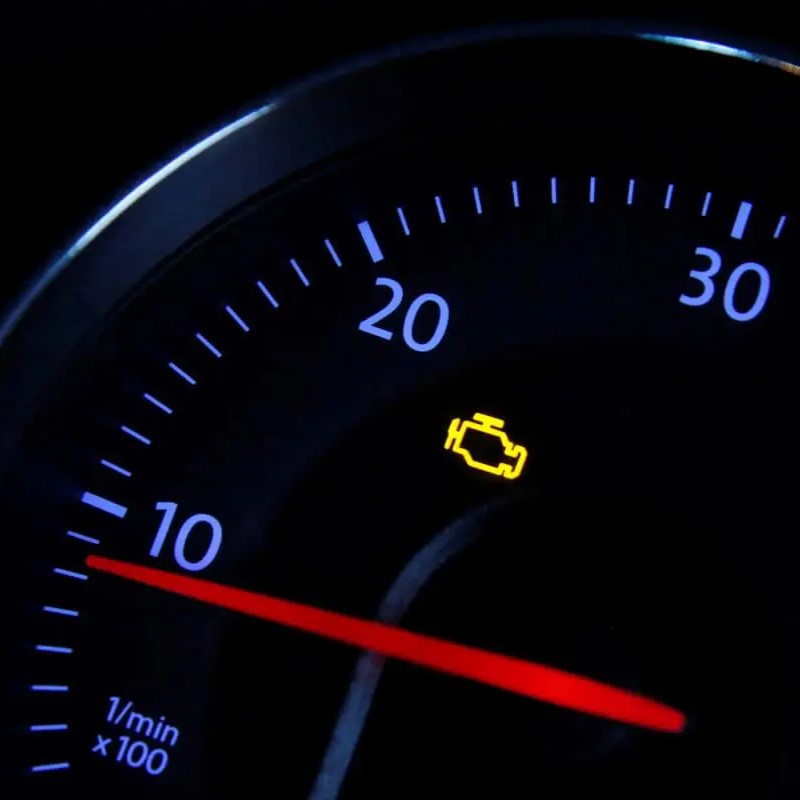The dashboard. A sea of symbols and lights, most glowing a calming green or blue. But then there’s that one. The one that wasn’t there before, and it’s a rather alarming red: the ABS light. It can strike fear into the heart of even the most seasoned driver. But take a deep breath, because while an illuminated ABS light indicates a problem, it doesn’t necessarily mean you’re stranded. Let’s delve into the world of ABS and understand what this light means for your car’s safety and your next steps.
What is ABS?
ABS stands for Anti-lock Braking System. It’s a crucial safety feature that has become standard equipment on most vehicles manufactured since the 1980s. In simpler terms, ABS prevents your wheels from locking up during hard braking situations. This is especially important on slick roads, where locked wheels can cause skidding and a loss of control.

How Does ABS Work?
Here’s the magic behind ABS: a network of sensors constantly monitors the speed of each wheel. When you slam on the brakes, a sensor detects a wheel about to lock. The ABS system then rapidly pumps the brakes on that particular wheel, preventing it from completely stopping and allowing it to maintain some degree of rotation. This back-and-forth pumping action creates a pulsing sensation in the brake pedal, which you might feel underfoot during hard braking. It’s important to maintain firm pressure on the pedal during ABS activation, even though it feels unusual.
Why Does the ABS Light Come On?
There are several reasons why your car’s ABS light might illuminate. Here are some of the most common culprits:
- Low Brake Fluid: Your brake system relies on hydraulic pressure to function. If the brake fluid reservoir is low, it can trigger the ABS light. This doesn’t necessarily mean there’s a leak, but it’s a good idea to get your brake fluid levels checked by a qualified mechanic.
- Faulty Wheel Speed Sensor: Each wheel has a sensor that monitors its rotational speed. If a sensor malfunctions or gets damaged by debris, the ABS system won’t receive accurate information and the light will come on.
- Malfunctioning ABS Module: The ABS module is the brain of the system, processing information from the wheel speed sensors and controlling the brake pressure. A malfunctioning module can lead to the ABS light turning on.
- Damaged Wiring: Electrical issues can also disrupt the ABS system. Damaged or corroded wiring can prevent proper communication between the sensors and the ABS module, causing the light to illuminate.
- Worn Brake Pads: While less common, excessively worn brake pads can sometimes trigger the ABS light. This is because the system might interpret the increased distance required to stop the car as a malfunction.

What to Do When the ABS Light Comes On?
So, you’re staring down that red light. Here’s how to react:
- Don’t Panic: The most important thing is to stay calm. While the ABS system is not functioning, your regular brakes should still work. However, be aware that you might experience some wheel lockup during hard braking on slippery surfaces.
- Get it Checked: The ABS light is a warning sign, and it’s crucial to address the issue promptly. Schedule an appointment with a mechanic to diagnose the problem. They can use a scan tool to identify the specific fault code associated with the ABS light.
- Avoid DIY Fixes: While some ABS problems might seem straightforward, diagnosing and repairing them can be complex. It’s best to leave it to a qualified mechanic who has the expertise and tools to fix the issue correctly.
Driving with an Illuminated ABS Light
Can you drive your car with the ABS light on? Technically, yes. Your regular brakes will still function, but remember, you’ll lose the added safety benefit of ABS, especially in adverse weather conditions. It’s important to exercise caution and increase your following distance to allow for more stopping time. However, it’s highly recommended to get the problem addressed as soon as possible.

The Importance of a Functioning ABS System
A properly functioning ABS system plays a vital role in maintaining control of your vehicle during emergency braking situations. It can help you avoid skidding and losing control, especially on slippery roads. This can significantly reduce the risk of accidents and keep you and your passengers safe.
Preventative Maintenance Tips
There are a few things you can do to help prevent ABS problems:
- Regular Brake Inspections: Schedule regular brake inspections and maintenance according to your car’s manufacturer recommendations. This includes checking brake fluid levels and pad wear.
- Avoid Submerging Your Car: While not a common occurrence, deep water crossings can damage ABS components.

Use Caution on Rough Terrain
Off-road driving can put extra stress on your ABS system. While ABS can be helpful on some loose surfaces, it might not perform optimally on very rough terrain. If you frequently take your car off-road, consider consulting your car’s manual for specific recommendations.
Living with the ABS Light: A Temporary Solution
In rare cases, you might find yourself in a situation where you absolutely need to drive your car with the ABS light on, perhaps due to an immediate need or lack of immediate repair options. Here are some important safety considerations:
- Drive Slowly and Increase Following Distance: Since you won’t have the benefit of ABS, it’s crucial to drive significantly slower than usual, especially in poor weather conditions. Double or even triple your following distance to allow for more stopping time in case of an emergency.
- Be Extra Cautious During Braking: Apply the brakes gently and progressively to avoid locking up the wheels. This might take some practice, as the sensation will be different without ABS.
- Prioritize Repair: Even if you can manage with a temporary workaround, getting the ABS system fixed should remain a top priority. It’s an essential safety feature, and neglecting it could put you and others at risk.

The ABS light on your dashboard might seem daunting, but understanding its meaning and taking the appropriate action can ensure your safety on the road. Remember, a functioning ABS system is a valuable guardian angel in emergency braking situations. By following the tips in this article and prioritizing regular maintenance, you can keep your ABS system in top shape and enjoy the peace of mind that comes with knowing your car has an extra layer of protection. If the light does come on, don’t panic. Take a breath, address the issue promptly, and drive safely until it’s resolved. After all, a little knowledge can go a long way in keeping you and your loved ones safe on the road.





